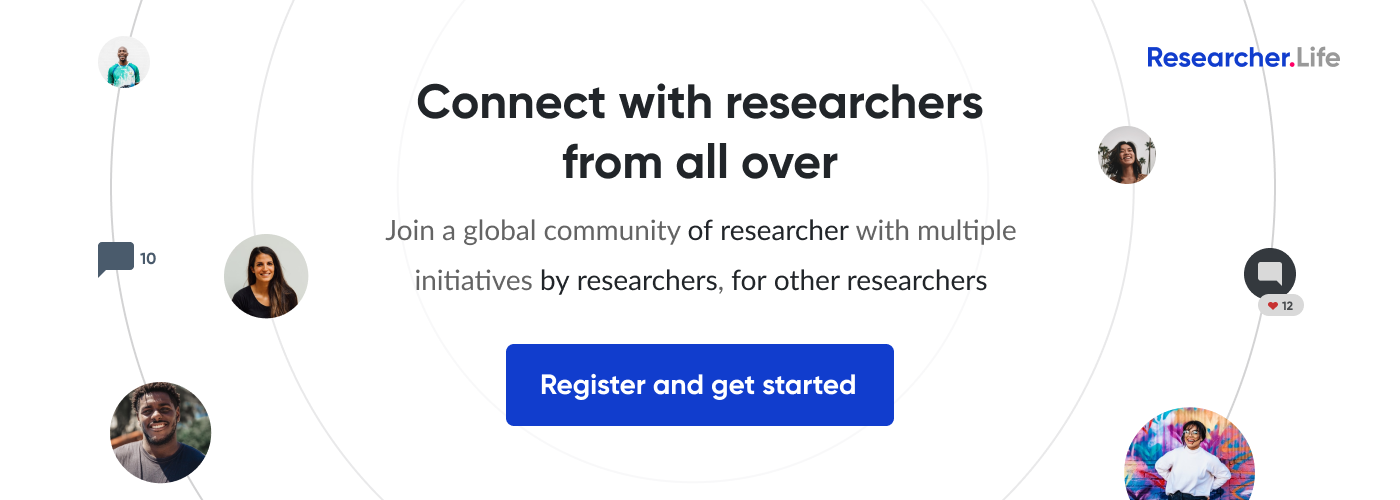Helping young scientists communicate science, engaging on social media platforms, coming out as queer in academia, and much more! (Good reads July 2019)

It’s that time of the month again when we bring to you some of the most happening discussions from the scholarly publishing world. Academics raised interesting questions like: Is it time for academia to adopt new publishing formats? How beneficial or harmful is the use of social media for scientists? Other thought-provoking pieces include how institutions can enable effective science communication and a researcher’s personal account of coming out as queer – so much to cover! Have you been too busy to catch up with all of these? Don’t worry! We have been following these interesting conversations and have curated a great list for you. Enjoy reading!
1. Is it time for academia to adopt a new publication model? Journals often focus more on the final results as compared to the study design and the research methodology while selecting a paper for publication, points out this Nature editorial. In a bid to publish novel and attention-grabbing findings, research papers with negative findings are often ignored, even if they could make a significant contribution to the field. To tackle this issue, several journals are adopting an innovative publishing model called Registered Reports. Under this new format, journals will decide if an article is publication-worthy based on a detailed protocol i.e. the research question, description of study design and methodology, and an analysis plan. Unlike the conventional practice, peer review and the decision to publish will be made even before the data is collected. The proponents of this format believe that committing to publish a paper before the results are known will eliminate the potential bias that journals tend to show in favor of positive results. Apart from that, problems with the study design can be identified at an early stage and the study can be improved with the help of peer review comments even before the data is gathered. The need for such a format in academia is evident as a lot of research with negative findings goes unpublished, thus wasting researchers’ funds and effort, argues the author. Irreplicability of research due to faulty study design is another reason why researchers need to look beyond the traditional publishing model. As many as 200 journals from across various fields have already accepted this format.
2. From the experiences of a queer palaeontologist: In this article, Riley Black shares their story of coming out as a queer palaeontologist. After years of trying to fit into a “gendered box,” they came out as non-binary and transgender six months ago. Black, who was born physiologically as male realized that they felt “more comfortable in a more feminine body.” Here, they share their experience of doing field work in a region with an extremely conservative population and how they and people like them are at a risk of institutionalized violence at the hands of homophobics in many parts of the world. Recognizing the dearth of inclusion and understanding of the LGBTQ+ community in academia, Black urges universities and employers to consider the medical needs of transitioning queers, like hormone replacement and surgery as they are just as important as regular health check-ups. They lament the lack of appreciation for diversity in palaeontology and highlight the need to dismantle the macho image associated with the field. Apart from this, Black also writes about friends and colleagues who accepted them with open arms. Black’s experience gives a peek into the life of a queer academic and emphasizes the need for social and professional inclusion of the LGBTQ+ community in academia.
3. The relationship between academia and social media: The use of social media has penetrated into all aspects of human life and has often proven to be fruitful; and academia is no exception. The authors of this article vouch their support for social media engagement and believe that this can benefit the scientific community as a whole. Twitter being the most popular social media platform in academia offers great opportunities to interact and collaborate with other researchers, and also helps bridge the cultural and regional gap between academics across the globe. One of the authors of this article, Ben Britton, researcher at the Imperial College of London, asked scientists about the usefulness of Twitter. The responses from the community revealed that apart from sharing ideas and feedback, researchers found Twitter a great means for sharing their personal successes and setbacks as well as venting out their frustrations. Moreover, social media helped them feel connected and provided a platform to the under-represented members of the community. The authors feel that social media serves as an international, easily accessible, informal, and an open-for-all platform where academics can voice their thoughts, opinions, and ideas. While advocating the use of social media, they are also cautious of the potential negative consequences. They express concerns that academics’ social media comments that can be seen as “critical” of their institutions may lead to dismissal from the institutions, thereby curbing academics’ freedom to express their opinions and engage in social media activities.
4. Getting young researchers to communicate science: Academia is buzzing with conversations about the need to communicate science to the wider society. Researchers need to step out of their academic bubble and convey to the public the insights that they gain through their research. That being said, what can academia do to help scientists bridge the gap and communicate their research to a wide audience? Systemic incentives to support science communication is what academia needs to get going with the vision, says Satyajit Rout, head of Impact Science, a science and marketing communications agency, in this blog. Institutions worldwide have adopted pro-science communication policies, for instance, the UK’s Research Excellence Framework requires scientists to exhibit the impact of their research. To help scientists fulfill this prerequisite, Rout believes that institutional support needs to be built. Through training, specialized programs, endorsement, seminars, and workshops institutions can aid a wider dissemination of research through their affiliates. He urges that the onus of promoting research impact should be decided between researchers and their institution’s research managers. Acknowledging how young scientists now feel the pressure to don the diverse hats of a “public speaker, marketer, and flag-bearer of science and the writing,” Rout calls upon academia to help young scientists survive the ever-evolving academic hustle.
5. The decline in the trend of single authorship: In the recent times, a growing number of research papers are being authored by multiple researchers and the number of single-author papers is on the decline, observes the author of this article. A closer look into the data gathered from Scopus database revealed that the share of single-author publications from across the globe in 2001 was 21.4% which subsequently dipped to 10.8% in 2017. In 2017, a mere 2.6% of the papers in China were authored by individual authors whereas in Korea the proportion was 4.4%. Upon speculation, academics found that various factors decide the number of authors for a research paper, one being the discipline of study. According to Vincent Larivière, professor of information science at the University of Montreal, researchers in the humanities and social sciences are more likely to publish papers individually than those in mainstream sciences, and added that countries like China contributed more in mainstream science research (which often involves collaborations), thus explaining the low rate of single authorship in China. Larivière pointed out that the change in criteria may also largely impact the trend: presently, people who have made technical contributions to the research are also given authorship, a practice which was not prevalent before. Some academics perceive single-author papers as a “wasted opportunity to establish connections and boost productivity,” says Giulio Marini, a research associate at the UCL Institute of Education. Adding his thoughts, Jos Barlow, professor of conservation science at Lancaster University says that science should be judged solely on the basis of quality and not the number of authors.
We hope you enjoyed our top picks for this month. Have you come across an interesting conversation that would make for a good read? If you have something you’d like to share, please do so in the comments section below. Do browse through our previous Scholarly Communications Good Reads collections where we regularly feature more such interesting discussions from the scholarly publishing world.
And if you’d like to stay tuned to important happenings in the journal publishing industry, visit our Industry News section.
Comments
You're looking to give wings to your academic career and publication journey. We like that!
Why don't we give you complete access! Create a free account and get unlimited access to all resources & a vibrant researcher community.













